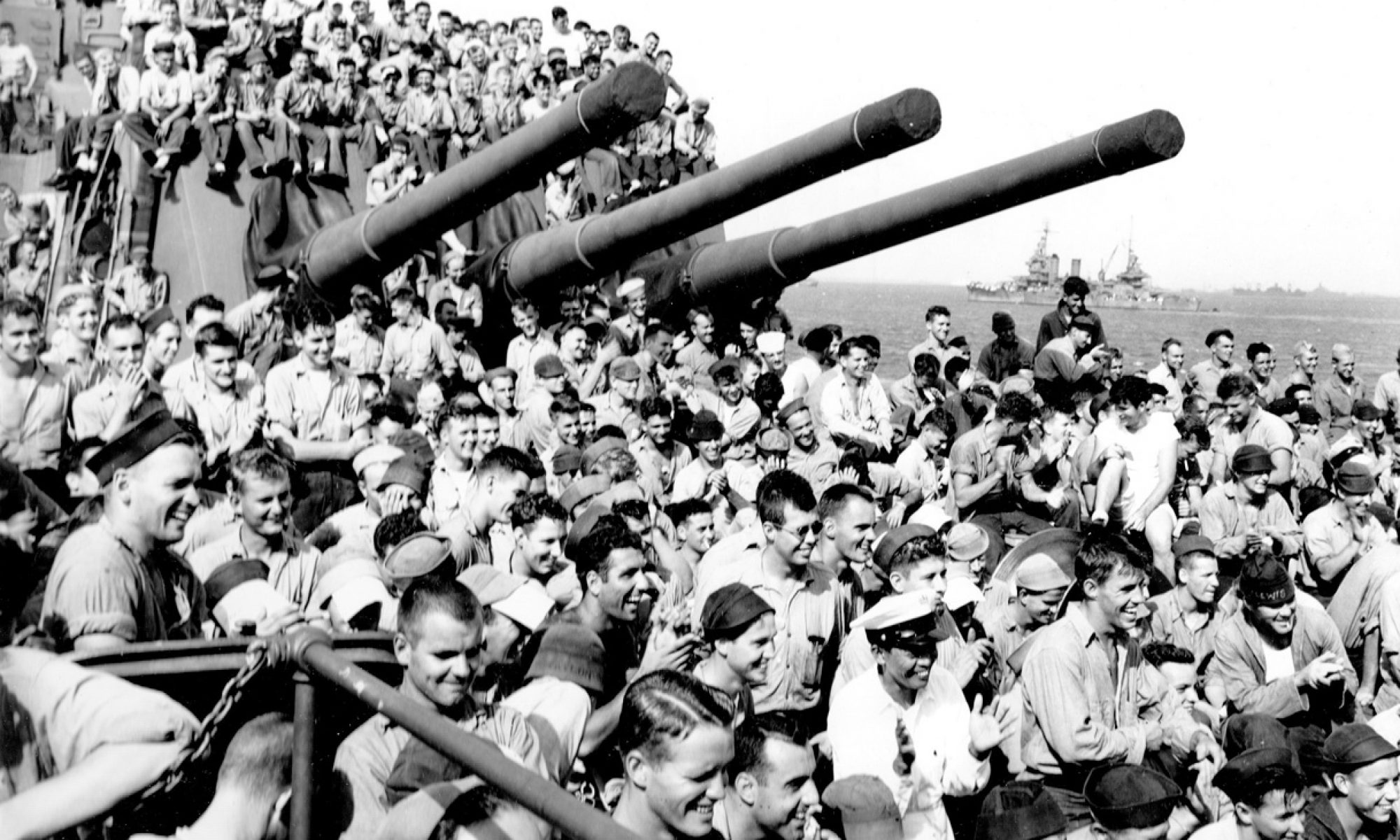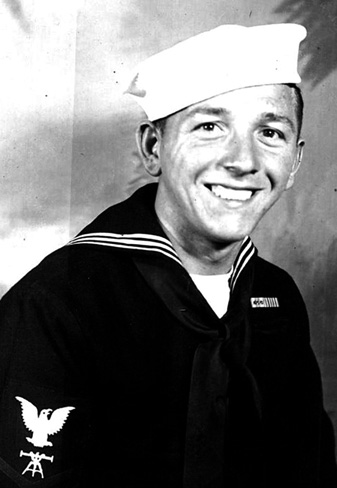12-20-14
(From Frank Studenski)
December 19, 1944: This morning we met the tankers and refueled, a couple of DE’s [Destroyer Escorts] are also missing. After fueling we started looking for survivors. Te smaller ships are picking up survivors.
December 20, 1944: This morning we are back in the area where the ships were lost. The carriers are launching planes for an extensive search of the area. This morning one of the planes from the Yorktown reporting three destroyers about 80 miles south of us. Two of the destroyers are dead in the water and the other is making about five knots. Another destroyer has been reported lost, the Monaghan. planes continue to search the area. Tonight we are heading back to Luzon for a one day strike, before going back to port. During the night orders were cancelled, on account of bad weather, the typhoon was just ahead of us. We are heading back to Ulithi, we will be in port for Christmas.
Julian Goldstein (from Baked Beans Vol. 2):
We’re going along and the ship is going up and down. At some point in this horrific storm, I looked over the side and there was this destroyer, this one destroyer, and it was going up and down and I watched it. All of a sudden, it went up, then it went down and it disappeared.
That brought a nightmare to me. When I first got married . . . ‘course I lost my wife just six years ago . . . she used to shake me out of some horrible dreams. I used to shout out in my sleep. Occasionally, I recall it. Even now, I sometimes wake up from a horrible dream – no, a nightmare is what it is. I sometimes see it happening in my dreams. I finally have gotten over it after all these years, without any medical help.
Joseph Pulaski (from Baked Beans Vol. 2):
I was alone on watch at night on Quad 7 standing on the back part of the after stack as protection from the 100 foot waves and wind. I was above the water line at least 100 feet when I saw a destroyer off the port side in the distance. We made a maneuver and did a 40 plus degree roll. I fell face down and was holding onto the catwalk steel mesh and was actually able to see the water as we rolled. I started to pray that we would be safe. The ship rolled back to the starboard side and I called Fire Control and asked where the destroyer was, I was told, “Joe, it sank.”
I thought we were done and our ship would be next as I continued to pray. The ship was watertight in integrity so all the hatches were closed. I was one of the few guys above deck. I continued my watch (four hours total.) I remember some survivors were picked up by our ship.
And, last but not least, Bob Knight sent me this this morning:

All the ships afloat suffered some damage in the typhoon. The Boston was no exception, although her damage was light compared to many others. In all, three destroyers sank and more than 800 men perished during “Halsey’s Typhoon.”
________________________
Merry Christmas, Happy Hanukkah, Happy Holidays, Happy New Year to all our friends and readers – no matter what you celebrate . . . ENJOY!
Steve and Bill,
sons of a sailor


